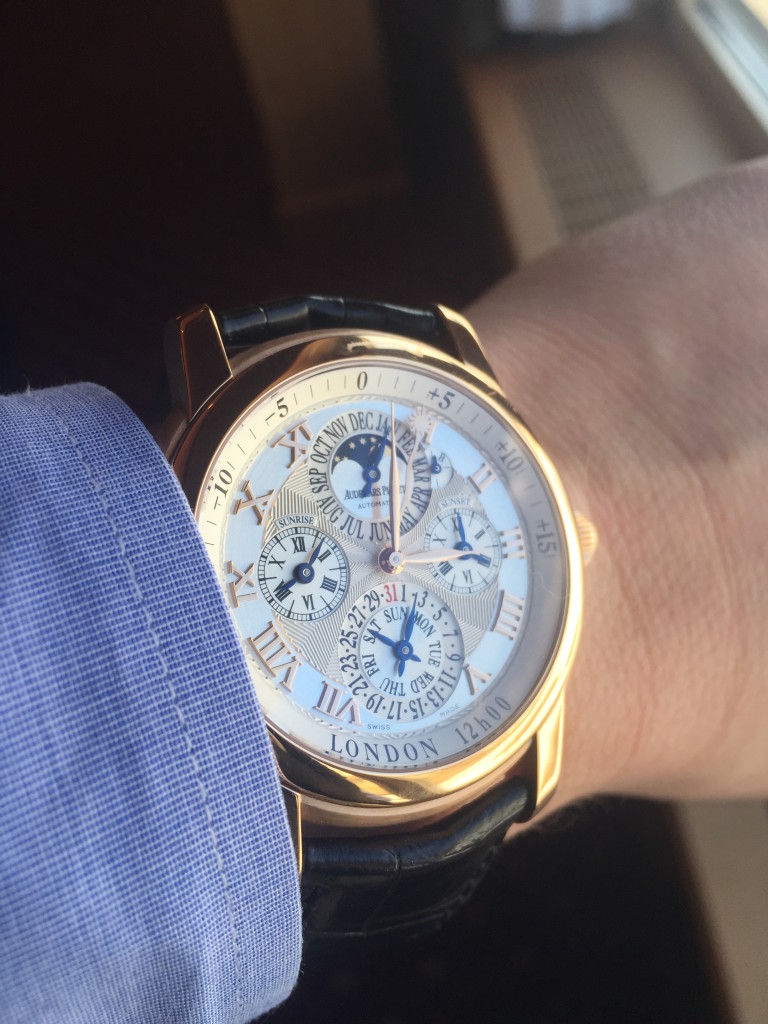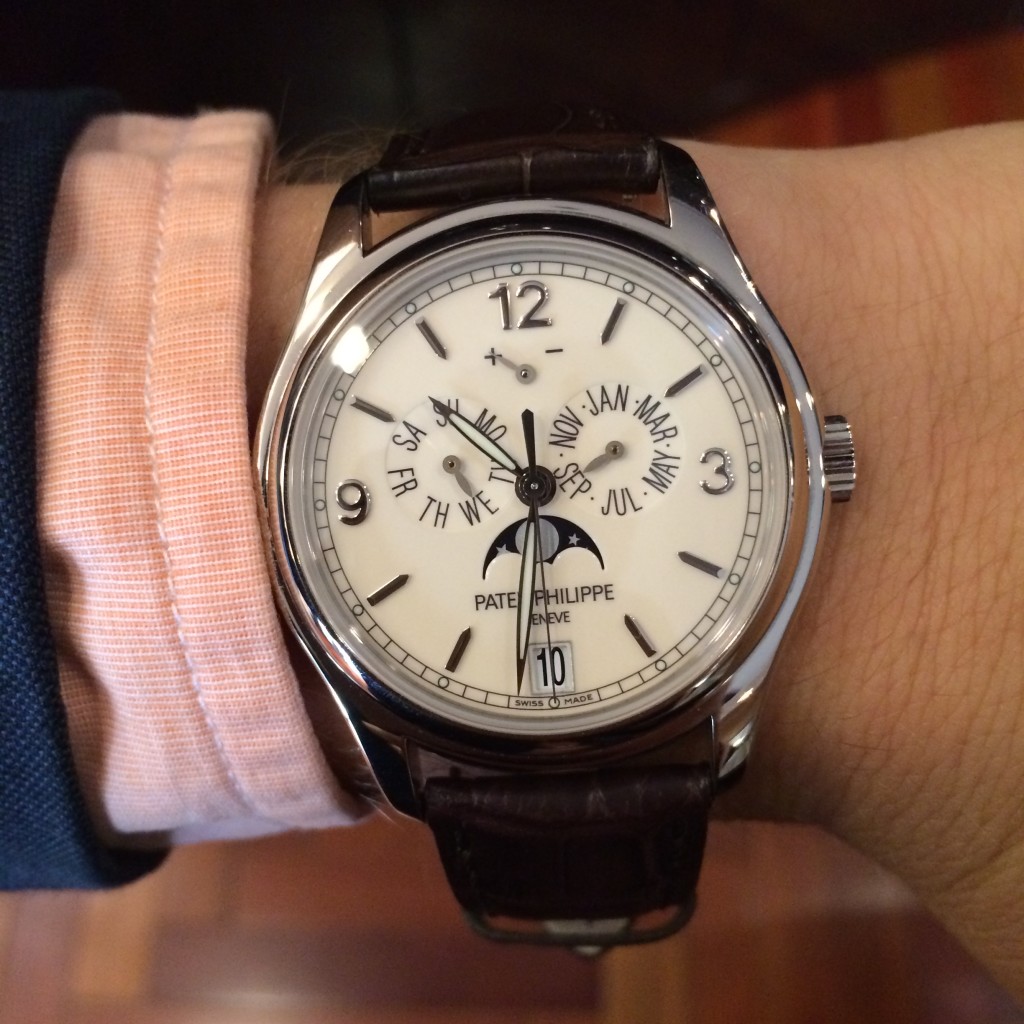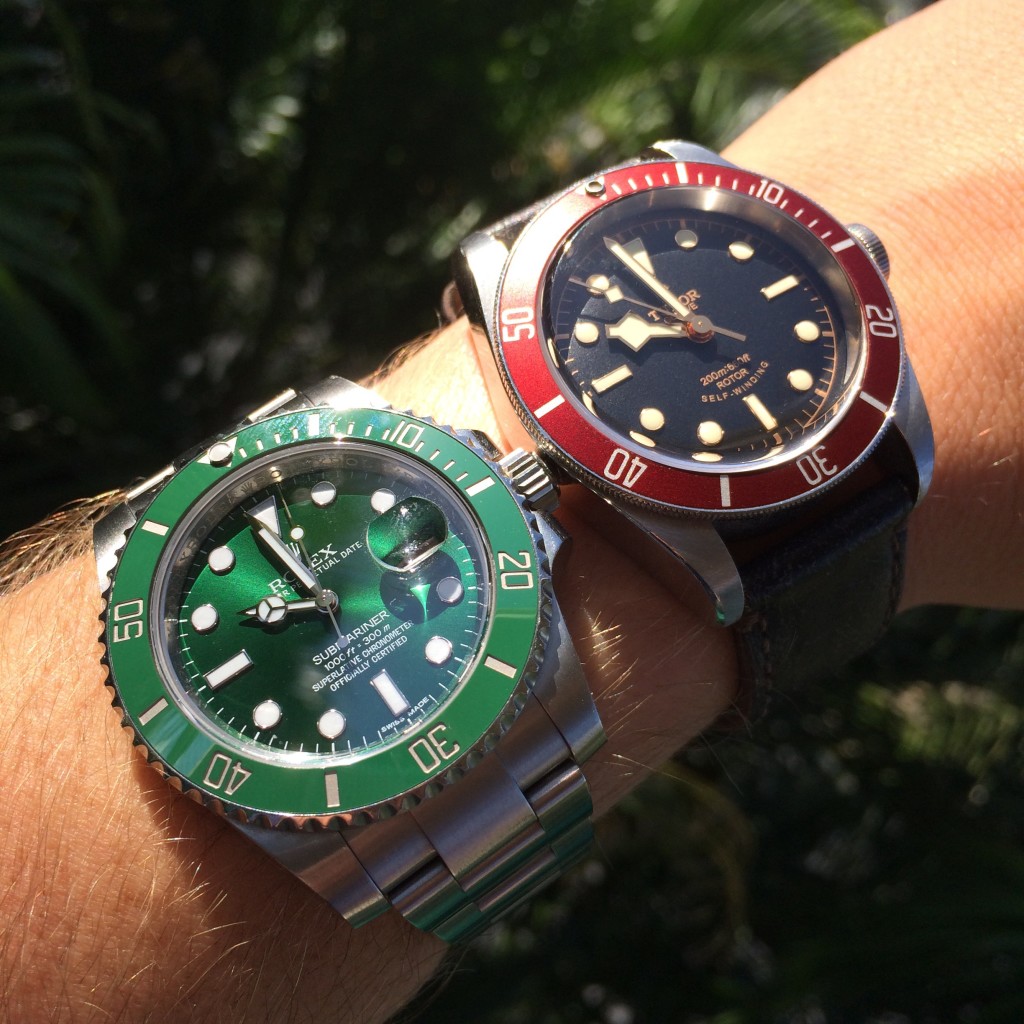Collecting Men’s Wristwatches
 It’s hard to pinpoint where my love for wristwatches first manifested. I remember when I was a kid, I was given a Digital Casio on a rubber strap. Back then, Casio made rubber watchbands with a circular insert for a compass attachment that was sold separately. The compass insert was no larger than a dime then, and I lost more than a few of them, but with its luminescent green cardinal points and white half-points, it had this sort of militaristic functionality that would inspire any curious youngster toward adventure. I would strap on my watch, find true North—just for the sake of eyeing something—and run out into the forest to poke around at the unknown.
It’s hard to pinpoint where my love for wristwatches first manifested. I remember when I was a kid, I was given a Digital Casio on a rubber strap. Back then, Casio made rubber watchbands with a circular insert for a compass attachment that was sold separately. The compass insert was no larger than a dime then, and I lost more than a few of them, but with its luminescent green cardinal points and white half-points, it had this sort of militaristic functionality that would inspire any curious youngster toward adventure. I would strap on my watch, find true North—just for the sake of eyeing something—and run out into the forest to poke around at the unknown.
Almost a decade and a half later, I was considerably more involved in the world of wristwatches. I found myself studying the mechanical complications and astronomical applications for watches. I would anticipate releases of new models from the most revered brands, all while slowly building up a modest collection of my own. Appreciation for horology (from the Latin term for the study of time) comes in many forms, the most obvious being, of course, watch collecting.
 Currently, collectors are finding that watches with historical significance are fetching the highest prices at auction in history. Take for instance the Henry Graves, Jr. Supercomplication pocket watch manufactured by Patek Philippe & Co, which has taken on a legend all its own. First commissioned in 1925, the watch took 5 years to engineer and 3 years to assemble. Made of 920 individual parts with over 400 screws and 100 wheels, with a calendar accurate to the year 2100, the Graves Supercomplication is still considered the most complex watch ever made by any watchmaker without the aid of computer technology.
Currently, collectors are finding that watches with historical significance are fetching the highest prices at auction in history. Take for instance the Henry Graves, Jr. Supercomplication pocket watch manufactured by Patek Philippe & Co, which has taken on a legend all its own. First commissioned in 1925, the watch took 5 years to engineer and 3 years to assemble. Made of 920 individual parts with over 400 screws and 100 wheels, with a calendar accurate to the year 2100, the Graves Supercomplication is still considered the most complex watch ever made by any watchmaker without the aid of computer technology.
The watch remained in the hands of family members, and eventually a Museum until 1999, when it was sold for over $11 million. It was later revealed that the buyer was a member of the Qatari royal family. Fifteen years later the Supercomplication was back on the auction block. In November of 2014, the hammer fell in Geneva to an anonymous bidder via proxy for just under $24 million.
By comparison, 15 years ago, the venerable Rolex Submariner, which many collectors will tell you was their very first step into the world of high-end watch collecting, commanded a respectable retail price of $3,575.00. Today the modern interpretation of the same watch will set you back $8,550.00. For those keeping track, that’s a year over year price increase of almost 140%. Granted the design of the watch has changed slightly, and marketing and advertising for the brand has evolved, but this is a meteoric rise in price and value through a recession and a technology explosion. Watch collecting, in addition to its historical significance, can garner the smart seller a lot of money.
Although in the last 18 months high-end watch sales at the retail level have seen a sort of plateau, watch collectors are not phased by this trend. We continue to see growth on the secondary market year over year, in spite of technological advances, atomic clocks on smart phones, and the advent of smart watches. A study by Endeavor partners showed 1/3 of Smartwatch buyers tire of their purchase quickly, and stop wearing it altogether after just 6 months. In the tiny world of limited release modern timepieces and hard-to-find vintage pieces, collecting is an art of its own, requiring knowledge, passion and perhaps most importantly, time.


Photos Courtesy Thomas McGovern











